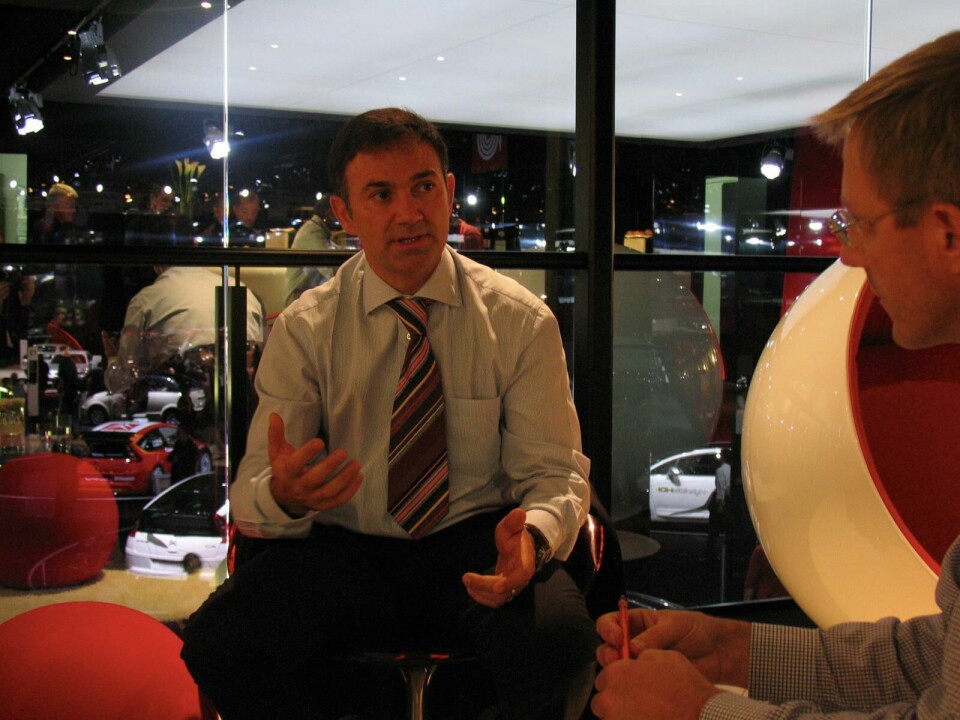
PSA Double Twin Studio Launch
Two years after the inauguration of its Automotive Design Network (ADN) Center in October 2004, PSA Peugeot Citroen bosses have decided to shake up the brand’s entire design structure by establishing four separate studios; two each for both Peugeot and Citroen.
Starting this week, for each new project for either marque, two competing studios with their smaller creative teams will be asked to come up with strong, innovative and highly distinctive designs. The head of each studio will report directly to the brand’s design director, who will foster the competitive spirit, while ensuring that the marque’s values and DNA are retained. Introducing this element of competition within the ADN will build on the quality of the work produced by PSA Peugeot Citroen’s in-house studios and aims to stimulate creativity amongst the designers.
Citroen’s Design Director, Jean-Pierre Ploue, explained the reasons behind the restructuring to Car Design News at the Paris Show. “First of all, every two or three years we need to provoke, to change. In this job, you have to be always on the cutting edge. It’s a rule in my organisation that we always need new conditions to work in. Secondly, we discovered our design suppliers were not able to come up with good proposals. Since 2000 we’ve used Giugiaro, Porsche and others but never could they provide design to the level we now require. Some were proposing retro design, looking back to the DS or 2CV, some were making very general proposals - it could have been an Opel or a Fiat. So we’ve stopped using them.”
The restructuring was also precipitated by the imminent retirements of Curt Gwin, Manager of the former PSA Advanced Studio situated at Carrieres sous Poissy and Peugeot’s now co-Director of Design, Gerard Welter. Gwin’s studio will now close and the team will be split between the new Peugeot and Citroen studios. Welter, 64, who has been managing Peugeot design since the 1970’s, will be replaced next year by the current co-Director of Design Jerome Gallix, who is the driving force behind the new ‘double twin studio’ structure. The placement of Gallix, at just 42 years-old, will continue the trend of placing younger designers at the head of design studios - a trend we have seen lately at Opel, Aston Martin, Mazda, Porsche and Volvo.
When Car Design News spoke with Gallix at the Paris Show, he explained how “originally the proposal came from Peugeot, from me, because I wanted to change the (Peugeot Design) organisation in order to renew”. He described how each brand’s pair of studios will be exclusively staffed so that designers in one studio cannot see the work of the other studio, how the process within the studios will be more orientated towards digital design and how “there will be reviews twice a week, minimum - big pressure, believe me!”
Within Peugeot, Keith Ryder, who is currently Design Manager for mid-size vehicles will become Deputy Design Manager and Pierre Authier, currently Design Manager of the 307 and 308 vehicle programs, is to become Design Manager for what Peugeot calls its ‘Major Peugeot Cars’ division - all of its hatchbacks and sedans.
The highly modular ADN building, designed by architect Jacques Ripault, made it easy to create four design studios of equal size and brightness to accommodate the new teams without extending the building or taking on more employees. The ADN was built in 2004 to bring PSA Peugeot Citroen’s styling and engineering teams together under one roof, with all the resources needed for their respective tasks. Overall efficiency has improved; 25 projects were undertaken in 2005 compared with 17 in 2004. Today, over a thousand people from 21 different countries work in this leading-edge, 70,000m2 design center, located on the outskirts of Paris.







